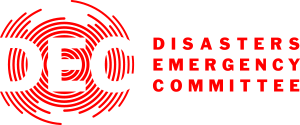
ResourceSpace has changed the way the DEC uses content, making it much easier for us to quickly make assets available both internally and externally during our emergency appeals.
Blog
11th March 2021
If you've been following banking, investing, or cryptocurrency over the last ten years, you'll have come across the term "blockchain". If you've had your ear to the ground, you'll have noticed how the term, which began several years ago as a mere whisper, has now grown into something of a cacophony, especially around the Bitcoin phenomenon.
Perhaps what is less well-known is the potential of blockchain technology to store, manage ownership of, and provide a full auditable history of data. Examples include supply chain management, identity management, chain of custody, and digital rights management.
Blockchain is essentially a shared database network. Everyone sharing the database can verify and monitor each transaction. These are then used as part of the verification for subsequent transactions, ensuring that previous transactions have not been modified. As everyone is sharing the database and transactions, they can create a consensus to ensure the authenticity of the entire system.
Thanks to advances in digital cryptography, only the owner can modify the records. However, such owners can permit other users to see full or part records. These permissions can also be time-sensitive, expiring after a certain time.
You might think that the main function of transaction logs in databases is about preventing fraud (although that can still be a factor). In fact, it's more about ensuring that system failures or programming errors don't corrupt the system. This might be needed to allow records to be accurately replicated from one database to another in real-time. If a server where they are held goes offline, another can pick up where it left off, and nothing is lost.
One way that hackers try to disrupt systems is through DDoS attacks. Because they attempt to absorb a large volume of traffic, DDoS protections can be expensive. DDoS attacks are concentrated on a central server - a single point of failure that doesn't exist with a decentralised blockchain. Some projects are already evaluating blockchain for dedicated DDoS protection systems that optimise bandwidth and therefore reduce cost.
If your organisation uses DAM software, you'll be familiar with redundancy and delivery concepts, such as failover systems and Content Delivery Networks (CDNs). Blockchains could provide the same level of global redundancy and access to Digital Asset Management.
File storage blockchains are building a similar network that optimises the benefits of decentralisation over the private control of CDNs. This ensures downtime risk is not only spread across network nodes but across the independent companies that run them.
Dedicated Digital Rights Management solutions also sit on a database. The principal dilemma is how to manage the complex usage rights and to verify ownership.
Analogue contracts need manual governance, but this isn't the case with blockchains. These use programmable smart contracts and non-fungible tokens. This means that ownership is unambiguous, and the digital rights can be granted through self-executing contracts.
This could have significant benefits for DAM users, as rights and copyright management is one of the biggest challenges organisations face.
At ResourceSpace we pride ourselves on being a forward thinking organisation, and we're excited about how blockchain might positively impact the future of Digital Asset Management.
Want to find out more about what ResourceSpace offers right now? Request your free trial and 10GB of digital asset storage below.
#Blockchain
#DataSecurity
#DigitalRightsManagement
#Cryptocurrency
#Bitcoin
#IndustryNews
#BestPractice